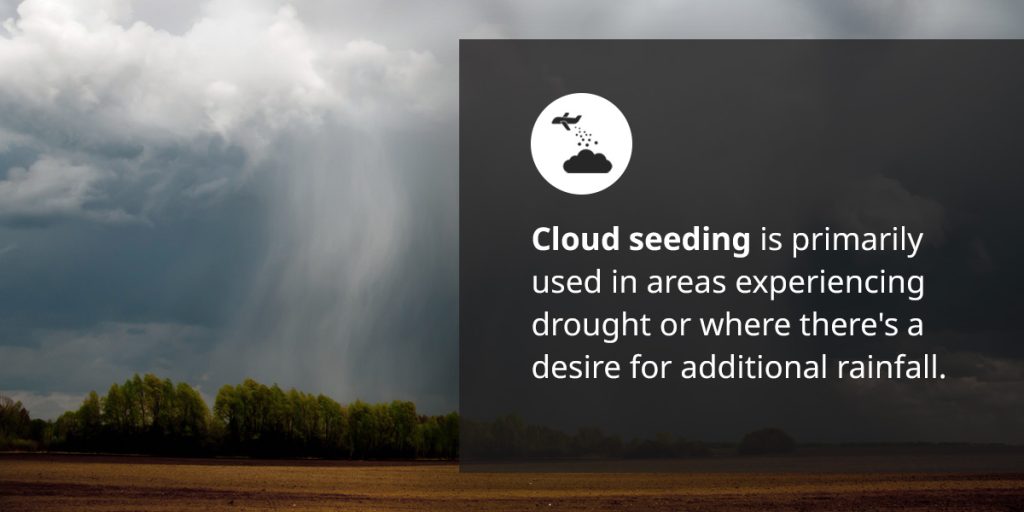
Cloud seeding, otherwise called artificial rainmaking or weather modification, is a technique used to modify weather conditions through the use of cloud seeding chemicals. Specifically, cloud seeding enhances precipitation in clouds by using chemicals such as silver iodide to induce rain. It’s employed worldwide to increase mountain snowpack and winter snowfall, reduce hail damage, alleviate fog and enhance rain.
Iofina Chemical, Iofina’s derivative manufacturing division in Kentucky, can supply silver iodide in both research and commercial scale quantities. Iofina Chemical is vertically integrated with Iofina Resources which produces iodine from brine solutions out of oil and gas fields at our multiple IOsorb® plants throughout Oklahoma.”
The process involves dispersing substances into a cloud that serve as nuclei for cloud droplets to form around. These substances are typically silver iodide, potassium iodide or dry ice.
The idea behind cloud seeding is to introduce these particles into clouds containing supercooled water droplets — droplets that are below freezing but remain in liquid form. By providing these particles as nuclei, more ice crystals will form within the cloud, which will grow and eventually fall as precipitation — rain or snow.

Cloud seeding is primarily used in areas experiencing drought or where there’s a desire for additional rainfall. A few examples are the United Arab Emirates’ use of cloud seeding to address water challenges and China’s use of it to regulate rainfall in Beijing. The scientific process is often considered for its potential benefits in various contexts:
The following countries implement cloud seeding:
Iofina Resources is the second-largest producer of iodine in the U.S. Our experts are ready to discuss how our chemicals can be utilized for cloud seeding to benefit your specific needs. Contact us today to find out more information or request product details. Take the first step toward harnessing the power of enhanced precipitation.